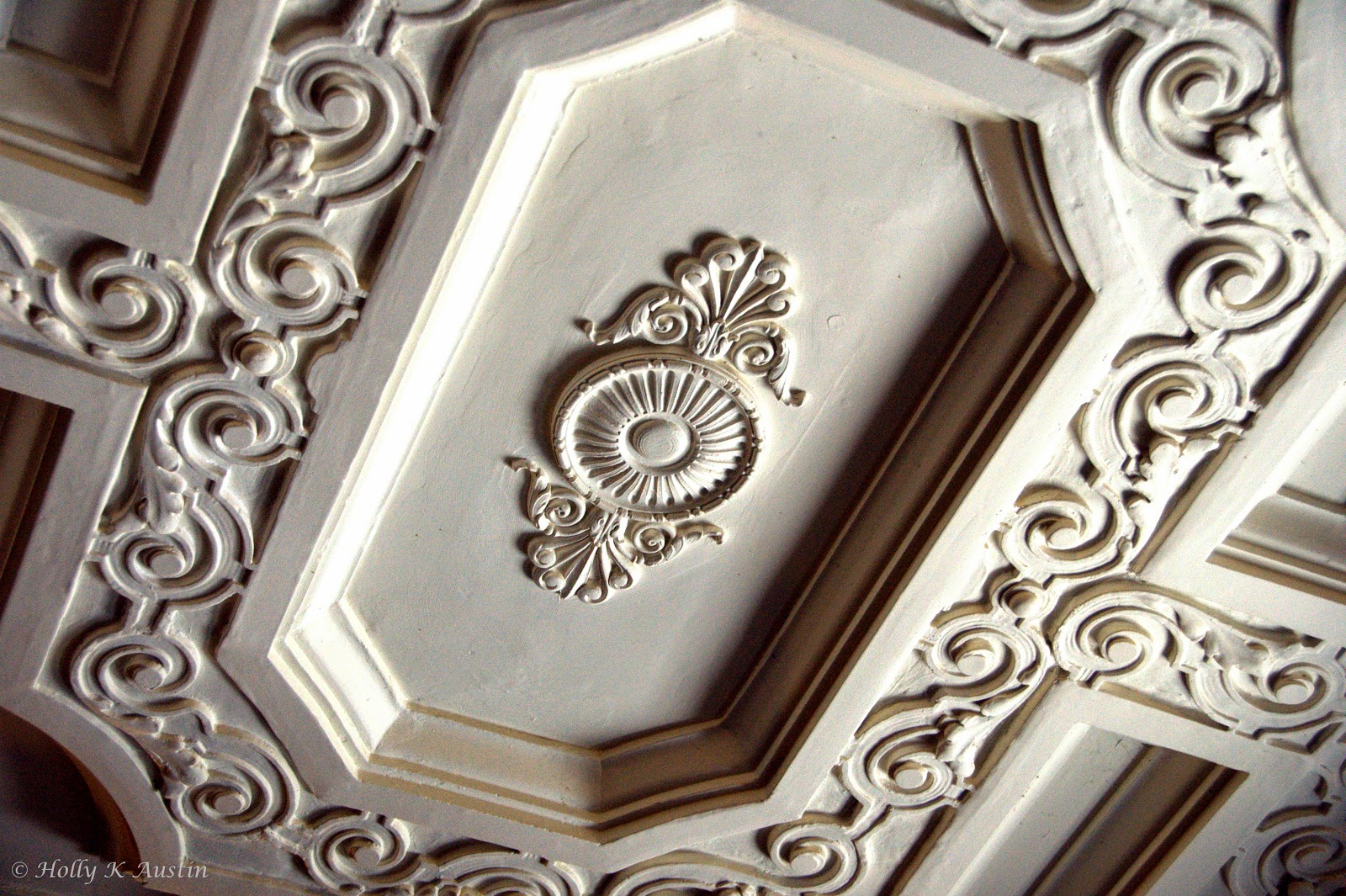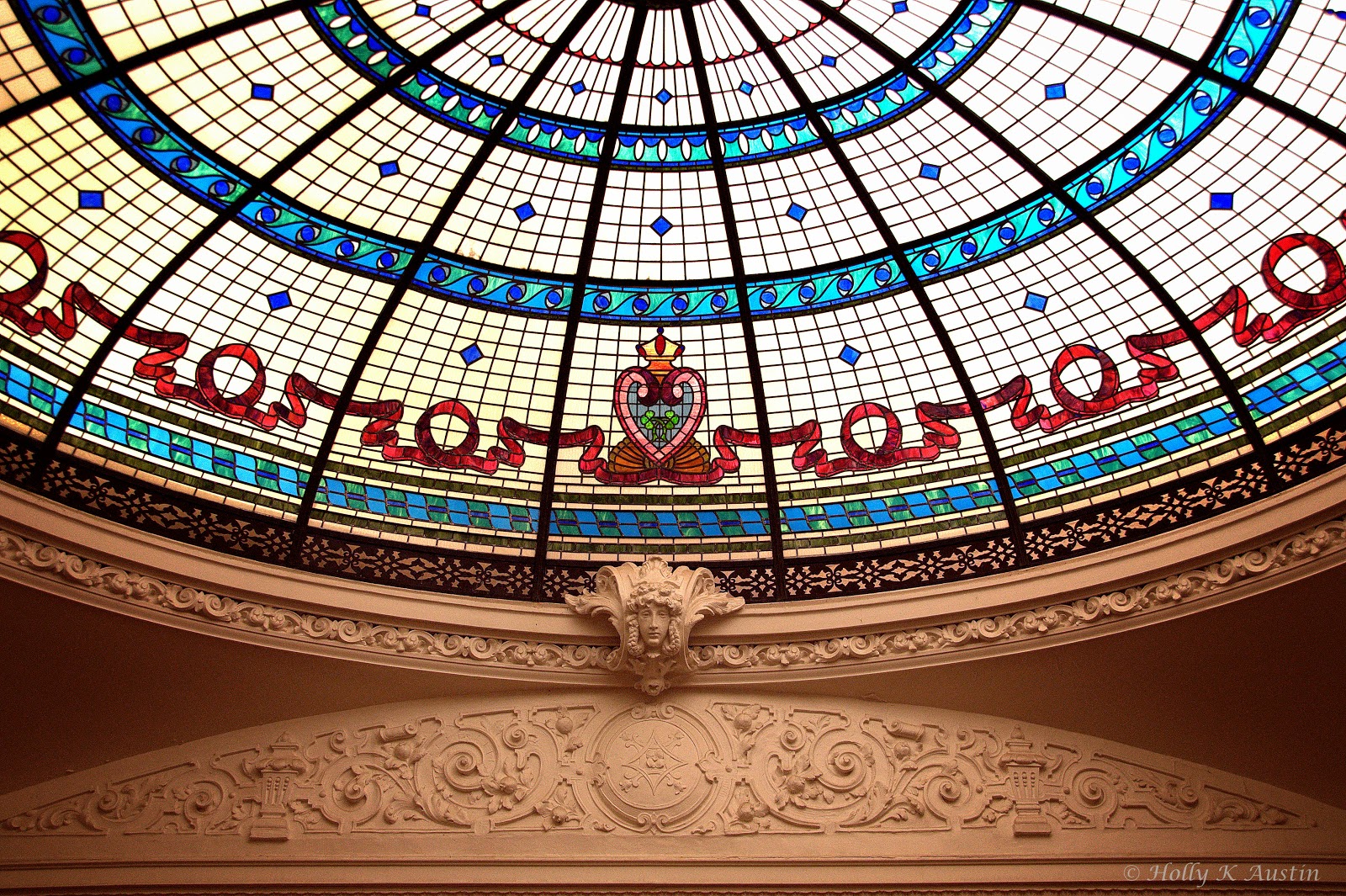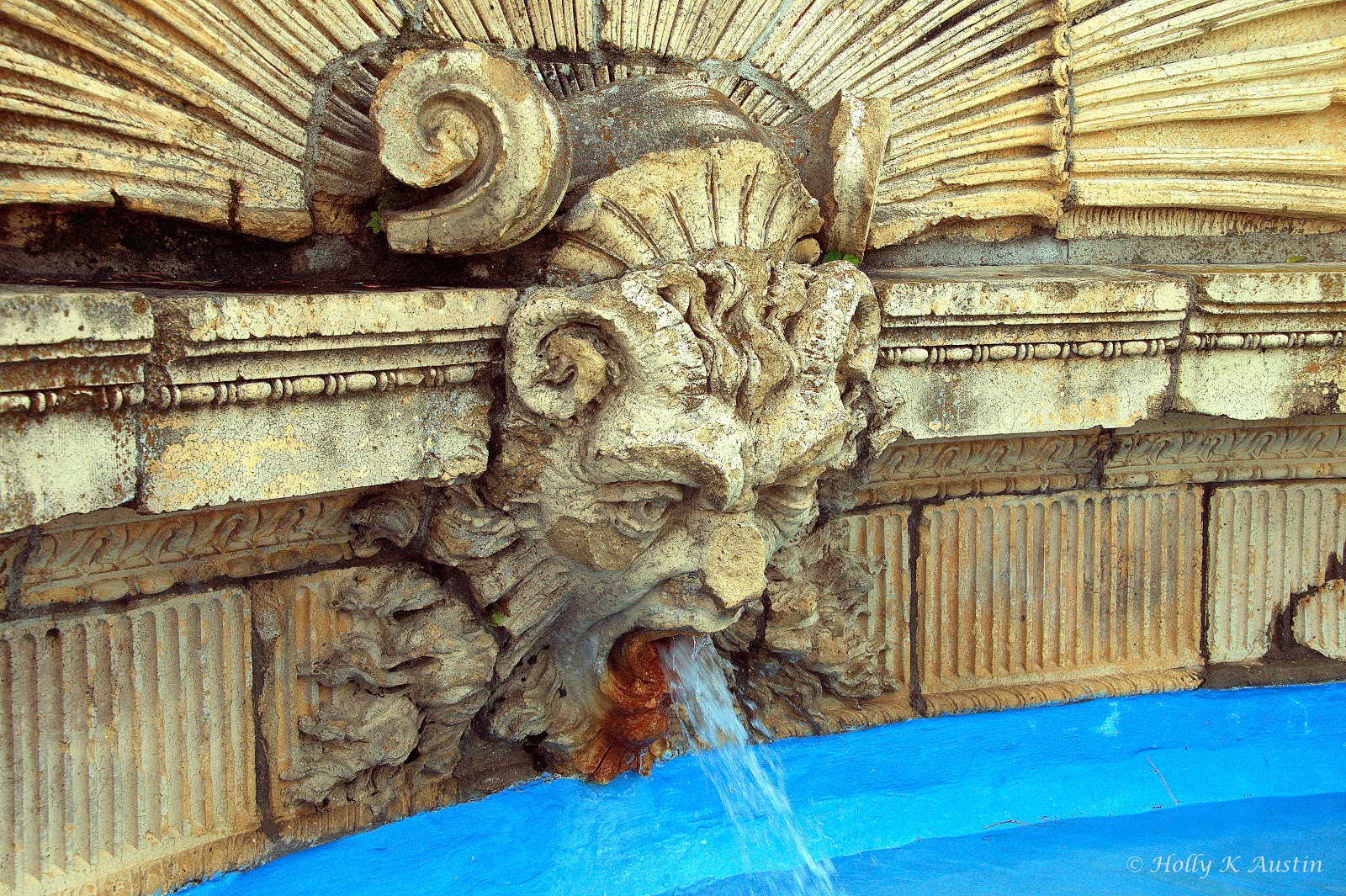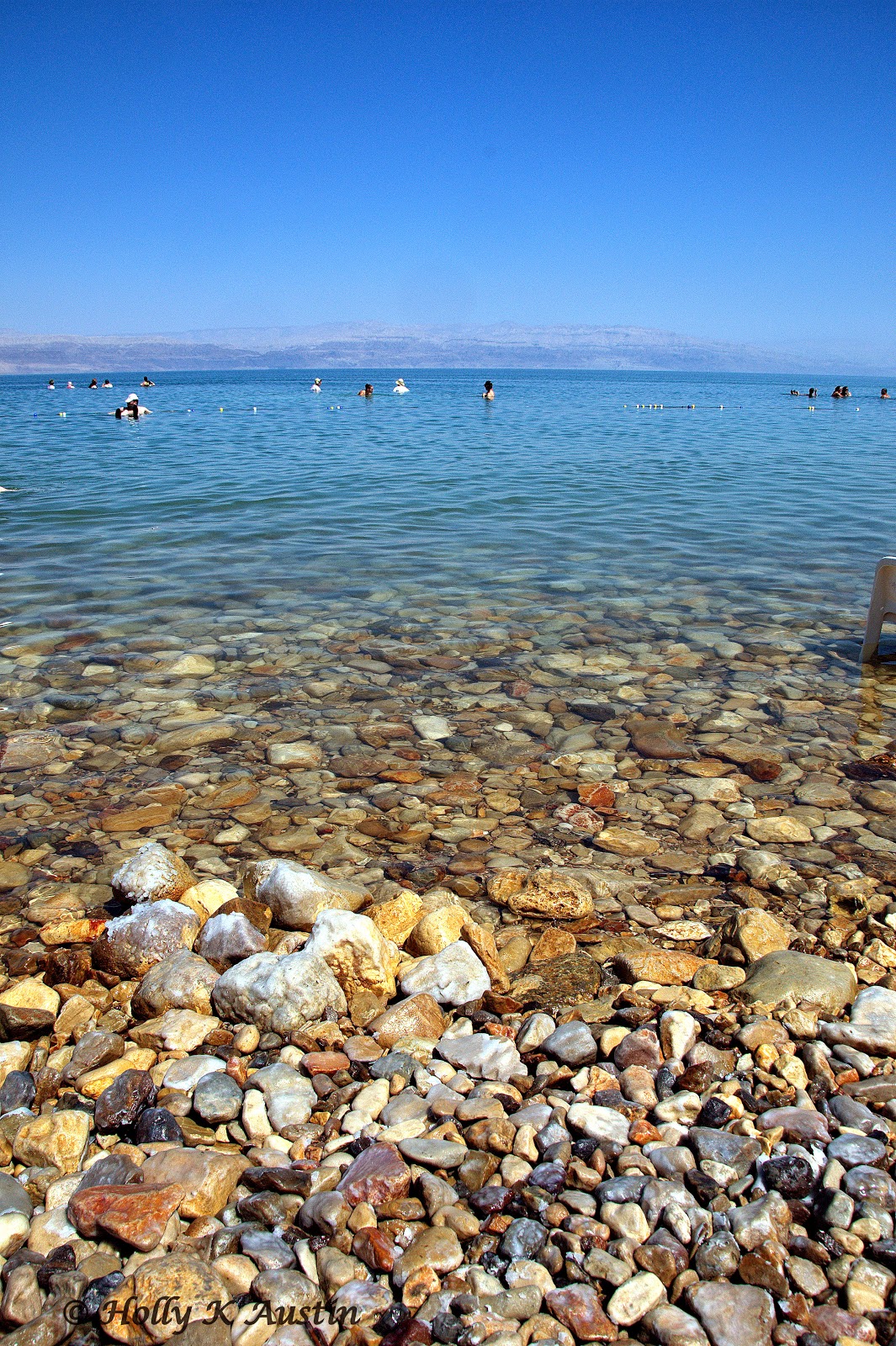Boldt Castle (and a little TI Park)
>> Tuesday, August 26, 2014
This summer my family (my husband, father, sister, brother-in-law, niece, and my Dad's friend S) spent a week up at TI Park on Wellesley Island. Wellesley Island, for those who don't know, is a pretty spot in the 1000 Islands on the St. Lawrence Seaway. It has a State Park with camping, cabins, hiking trails, and a nature center, which was my childhood favorite place to camp.
The Island is also home to a variety of summer home communities, including the quaint community called TI Park, filled with historic homes, community outdoor recreation spots, and a few restaurants and shops. There are daily soccer and kickball and tennis activities for kids, an outdoor movie theater screening old favorite family movies in the evenings (I got to introduce my niece to The Princess Bride), and lots of ways to enjoy the river. The homes are all close together, and the people incredibly friendly. Most of the families who spend a week or a summer there have been doing so for years and a lot of Central and Northern New Yorkers will reflect on their childhood experiences at the place wistfully when it's mentioned.
TI Park was indeed a lovely place to spend a week, (though sadly, as I write this, I realize I took almost no photos of the community itself). My father and I had been wanting to spend a week there since I was a little kid, when we'd camp at the Wellesley Island State Park and take a drive down to the enchanted little island community of pretty historic gingerbread houses. It's kind of awesome to do things you've been vaguely dreaming about doing for years. This year I got in a trip to Israel AND a week at TI Park - not too shabby.

Of course, while we were there we enjoyed the Guzzle, which is (was) the center of social life at TI Park. The Guzzle was, and hopefully will be again, a great little ice cream parlor positively packed every summer evening with families enjoying a treat at the end of the day. The fire that destroyed it and the adjacent fire house just shortly after our visit was so sad (see here for more on it), but I have high hopes that it will return again.
ANYWAY, I digress from the actual intended topic of this post. One day we took the obligatory trip to Boldt Castle, on an island right near Wellesley Island. As the Boldt Castle web site states "At the turn-of-the-century, George C. Boldt, millionaire proprietor of the world famous Waldorf Astoria Hotel in New York City, set out to build a full size rhineland castle in Alexandria Bay, on picturesque Heart Island. The grandiose structure was to be a display of his love for his wife, Louise." Louise sadly died before it was complete, and George Boldt abandoned work on it.
When we visited it when I was a child, very little of it was complete - it was largely a crumbling castle with unfinished decaying rooms covered in graffiti. But OH MAN did those rooms appeal to my active imagination! Check out these before photos. They are basically how I remember the place from my early visits.
 The Thousand Islands Bridge Authority acquired the property in 1977 and has been working on restoring it ever since. They're making amazing progress. Not only have the brought the house back to the state it was in when work was abandoned in 1904, but now they are working on completing the plans that George Boldt had drawn up for it, as well as restoring the children's play house (seen above) and other buildings. I hadn't been to the island in maybe 5 years, and was absolutely astonished at how much has been done in that time. I recommend visiting it if you've never been, and visiting it again if it's been a while!
The Thousand Islands Bridge Authority acquired the property in 1977 and has been working on restoring it ever since. They're making amazing progress. Not only have the brought the house back to the state it was in when work was abandoned in 1904, but now they are working on completing the plans that George Boldt had drawn up for it, as well as restoring the children's play house (seen above) and other buildings. I hadn't been to the island in maybe 5 years, and was absolutely astonished at how much has been done in that time. I recommend visiting it if you've never been, and visiting it again if it's been a while!
I took lots of photos, though very few are, ah, well, typical tourist shots I guess. I somehow zoned in on odd little details, quirky carvings, etc. I basked in the atmosphere various rooms and buildings exuded. Pretty much my usual.
For your viewing pleasure, here is my version of Boldt Castle.
The power house that would have housed generators.
I love the little squashed lion-ish face carved over the heart.
This is the amazing stained glass dome over the main staircase.

I LOVE the atmosphere in this shot, which best I can tell, was just a covered walkway to be traversed mostly by servants between the main house and the power house.
The dovecote, which would have been home to exotic fowl but also to a water tower.
I was absurdly excited to see this pool room somewhat restored. It's one of the spots in the house I've always liked.
Industrious creature. This was up on the roof of the castle, in a pretty hardy wind.
This is a kind of pepper plant. It's black. BLACK. How cool is that?
My niece's friend Flopsy accompanied us on our visit. He looked so picturesque on this bench.
Most of the time I don't want any kind of grandiose house, because it wouldn't feel very homey. I love my old, battered, inviting 1831 Erie Canal Village house the size it is. I love to visit castles, but wouldn't want to live in one. But let me tell you how much I want a "porch" like this. It's got an outdoor fireplace, too. A gal can dream!
Read more...
The Island is also home to a variety of summer home communities, including the quaint community called TI Park, filled with historic homes, community outdoor recreation spots, and a few restaurants and shops. There are daily soccer and kickball and tennis activities for kids, an outdoor movie theater screening old favorite family movies in the evenings (I got to introduce my niece to The Princess Bride), and lots of ways to enjoy the river. The homes are all close together, and the people incredibly friendly. Most of the families who spend a week or a summer there have been doing so for years and a lot of Central and Northern New Yorkers will reflect on their childhood experiences at the place wistfully when it's mentioned.
TI Park was indeed a lovely place to spend a week, (though sadly, as I write this, I realize I took almost no photos of the community itself). My father and I had been wanting to spend a week there since I was a little kid, when we'd camp at the Wellesley Island State Park and take a drive down to the enchanted little island community of pretty historic gingerbread houses. It's kind of awesome to do things you've been vaguely dreaming about doing for years. This year I got in a trip to Israel AND a week at TI Park - not too shabby.

Of course, while we were there we enjoyed the Guzzle, which is (was) the center of social life at TI Park. The Guzzle was, and hopefully will be again, a great little ice cream parlor positively packed every summer evening with families enjoying a treat at the end of the day. The fire that destroyed it and the adjacent fire house just shortly after our visit was so sad (see here for more on it), but I have high hopes that it will return again.
ANYWAY, I digress from the actual intended topic of this post. One day we took the obligatory trip to Boldt Castle, on an island right near Wellesley Island. As the Boldt Castle web site states "At the turn-of-the-century, George C. Boldt, millionaire proprietor of the world famous Waldorf Astoria Hotel in New York City, set out to build a full size rhineland castle in Alexandria Bay, on picturesque Heart Island. The grandiose structure was to be a display of his love for his wife, Louise." Louise sadly died before it was complete, and George Boldt abandoned work on it.
When we visited it when I was a child, very little of it was complete - it was largely a crumbling castle with unfinished decaying rooms covered in graffiti. But OH MAN did those rooms appeal to my active imagination! Check out these before photos. They are basically how I remember the place from my early visits.
 The Thousand Islands Bridge Authority acquired the property in 1977 and has been working on restoring it ever since. They're making amazing progress. Not only have the brought the house back to the state it was in when work was abandoned in 1904, but now they are working on completing the plans that George Boldt had drawn up for it, as well as restoring the children's play house (seen above) and other buildings. I hadn't been to the island in maybe 5 years, and was absolutely astonished at how much has been done in that time. I recommend visiting it if you've never been, and visiting it again if it's been a while!
The Thousand Islands Bridge Authority acquired the property in 1977 and has been working on restoring it ever since. They're making amazing progress. Not only have the brought the house back to the state it was in when work was abandoned in 1904, but now they are working on completing the plans that George Boldt had drawn up for it, as well as restoring the children's play house (seen above) and other buildings. I hadn't been to the island in maybe 5 years, and was absolutely astonished at how much has been done in that time. I recommend visiting it if you've never been, and visiting it again if it's been a while!I took lots of photos, though very few are, ah, well, typical tourist shots I guess. I somehow zoned in on odd little details, quirky carvings, etc. I basked in the atmosphere various rooms and buildings exuded. Pretty much my usual.
For your viewing pleasure, here is my version of Boldt Castle.
The power house that would have housed generators.
I love the little squashed lion-ish face carved over the heart.
This is the amazing stained glass dome over the main staircase.

I LOVE the atmosphere in this shot, which best I can tell, was just a covered walkway to be traversed mostly by servants between the main house and the power house.
The dovecote, which would have been home to exotic fowl but also to a water tower.
I was absurdly excited to see this pool room somewhat restored. It's one of the spots in the house I've always liked.
Industrious creature. This was up on the roof of the castle, in a pretty hardy wind.
This is a kind of pepper plant. It's black. BLACK. How cool is that?
My niece's friend Flopsy accompanied us on our visit. He looked so picturesque on this bench.
Most of the time I don't want any kind of grandiose house, because it wouldn't feel very homey. I love my old, battered, inviting 1831 Erie Canal Village house the size it is. I love to visit castles, but wouldn't want to live in one. But let me tell you how much I want a "porch" like this. It's got an outdoor fireplace, too. A gal can dream!
Read more...









.JPG)








































































































